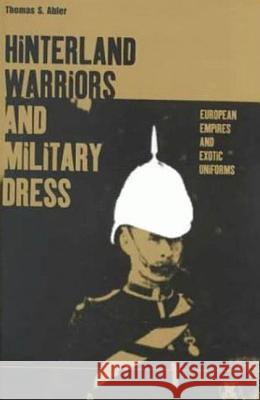Hinterland Warriors and Military Dress: European Empires and Exotic Uniforms » książka
Hinterland Warriors and Military Dress: European Empires and Exotic Uniforms
ISBN-13: 9781859732014 / Angielski / Twarda / 1999 / 224 str.
Much of the exotic dress of the armies of Europe and elsewhere has its origins in the conditions of frontier wars fought by imperial armies. As states have expanded to control hinterlands occupied by culturally diverse peoples, the ensuing conflicts have had an impact on imperial armies and the way they have dressed. 'Hinterland warriors' have been employed by imperial governments for a multitude of reasons: they understand the tactics of enemies at the border and are skilled tacticians themselves; they possess local knowledge; they do not disrupt the labor supply; politicians do not have to answer for high casualty rates if these are suffered by hinterland rather than metropolitan troops; finally, they are often classed as 'martial races' and therefore do not require the training needed by fresh recruits.Throughout time, imperial officers and auxiliaries adopted the dress of these hinterland troops under their command, and even metropolitan units in the imperial armies appropriated items of local dress while engaged in wars on the borders of the empire. These innovations frequently became institutionalized, and in many cases were distorted and stylized, resulting in a caricature of the dress of the hinterland troops that originally provided the model. This engrossing book charts how the perceptions of these marginalized peoples influenced and ultimately transformed the history of military dress.











